#Quality Optics
Explore tagged Tumblr posts
Text

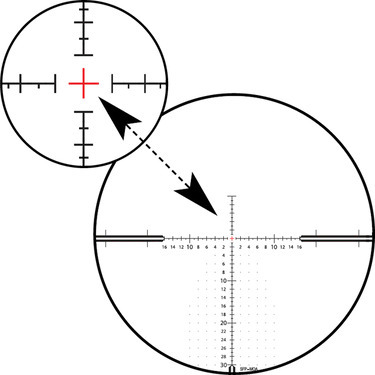

Elevate every shot with the Zeiss V4 4-16x50 Reticle 64 ZMOAI-T30 ASV Elevation
ring mounted rifle scope. Their compact design and perfect balance between a wide field of view and large magnification range is ideal for all types of hunting. Conquer accuracy with Zeiss and transform every shot into a success story..
#Zeiss Conquest V4#Rifle Scope#4-16x50#ASV Elevation Windage#Hunting Optics#Long-Range Shooting#Optics and Scopes#Precision Shooting#Tactical Optics#Hunting Gear#Reticle 64 ZMOAi-T30#Scope Mounting#Hunting Accessories#Shooting Equipment#Zeiss Optics#Hunting Essentials#Outdoor Gear#Optics Technology#Shooting Sports#Quality Optics
0 notes
Text

this took me like half an hour to make
#the hundred line#last defense academy#hiruko shizuhara#takumi sumino#deltarune#i couldn't find a high quality image of hiruko's acrylic anywhere so that's why it looks like that#sf looks misaligned but i double-checked it isn't it's an optical illusion#things took a weird route right now#the hiruko portrait is from her concept art#i just finished deltarune chapter 4 for the third time and got my hundredth ending in hundred line like a few days later so this felt right#the hundred line last defense academy
25 notes
·
View notes
Text
Hitting these guys with my car like actually


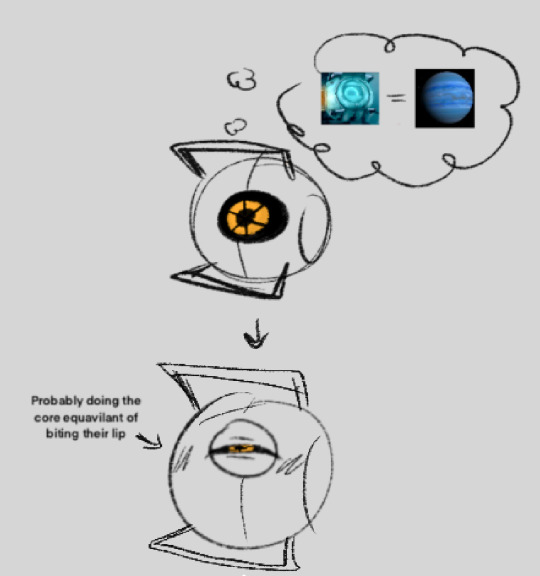
#my art#portal 2#meet the cores#Ray meet the cores#space core#click for better quality#digital art#sketch#FUCK drawing Rays optic bbg I love you but what the scallop#ANYWAYS they make me very sick#fanart#POSTING THIS ON ECLIPSE DAY LIKE THEY PROLLY WOULDVE WANTED
94 notes
·
View notes
Text
Honestly I feel kind of ambivalent about the trade war with China but this is just such a goofy angle:
…he warned in a different setting that children may have to shrink their toy chests as the tariffs raise the price of dolls from China. . .
“You know, somebody said, ‘Oh, the shelves, they’re going to be open,’” he said. “Well maybe the children will have two dolls instead of 30 dolls, and maybe the two dolls will cost a couple of bucks more than they would normally.”
sorry kids, Christmas sucks this year, but your sacrifice is necessary for the Greater Good
this is like children’s movie villain behavior, among his many accomplishments we must say Trump has made fiction obsolete, it simply no longer competes with real life
#it’s the optics#i have this argument/discussion with my kids all the time#don’t just amass plastic crap for its own sake quality over quantity etc#so again ambivalence#but man#what a thing to announce as policy
6 notes
·
View notes
Text
i have this intrinsic revulsion to cutesy aesthetic small beanisms but am also deeply drawn to things that require a lot of care, detail, and nurturing which rubs up directly against those types of people often. Seeing people invested in my hobbies but they're doing it to be like #cottagecore is like such a perversion of the thing. Puppeting its lifeless corpse around for monetization purposes. Spending hours carting around your tripod to get the perfect shots to present yourself as if you are living in the moment enjoying the beauties of the world. Its honestly tragic.
#when you run across someone who is making like crappy low quality videos about something you like just hammering you with info#they get it#that person is in it for the right reasons and they actually care about it outside of its potential for monetary and social gain#making money on your hobbies isnt bad but there are people you can just feel they're only in it for the optics
18 notes
·
View notes
Text
I am losing my mind. My like, 15 year old point and shoot camera I have brought on every trip and outing basically my entire adult life appears to have grown legs and walked away IN my house sometime between January and now. It is nowhere to be found! I have not brought it with ne anywhere since Christmas, so I didn't lose it somewhere. It's just. Gone.
Buying a new one of the same camera used is like $2k on eBay because it's genuinely considered one of the best point and shoots ever made. Did someone come in my house and steal that one singular thing and leave????
#i am genuinely considering trying to buy a $500 ancient factory surplus model from china right now because if I wait.......#.......well........ it's not going to get LESS expensive#i am aware this is genuine insanity behavior but also it was the perfect camera#like. We're talking powerful optical zoom with a professional quality lens that folds down smaller than my phone#and a battery life of like 2+ weeks under constant use conditions#and perfect color balance every time#i cannot switch to an inferior point and shoot#but i also REALLY can't adjust to Big Boi Lens because you can't fucking put one of those in a pocket#WHERE THE FUCK DID IT GO
2 notes
·
View notes
Text

#asexual#acespec#aromantic#ap physics#physics#optics#stemblr#all of my images come out terrible quality 😭
14 notes
·
View notes
Text
This is a great breakdown of phone cameras and worth a read if you do most of your photography with a phone.
Phone cameras are comparable to or better than many point-and-shoot digital cameras (especially older generation cameras, and this has been the case for several years now). But there is no such thing as a "pro" phone camera, just like there's no such thing as a "pro" point-and-shoot.
You can get really great photos and they can absolutely serve your needs. It's a fantastic solution if you're not in a position to carry extra gear with you.
But they are not "pro".
They can also be a perfectly acceptable tool for photography as an art form. You use the tools and explore and maximise their capabilities as you feel driven to. You certainly limit yourself in major ways with a camera phone, but that's part of the art. ALL photography is bound by the limits of your tool, and the entire point is to work within those and push your craft to see what you can do. So you can use the camera phone AS a pro (i.e. someone who understands the tool and principles of photography), but you have to understand the tool for that.
If you want a pro camera though, get a real camera.
Also, you need to identify the type of photography you like or want to do in order to choose the right camera.
I do a LOT of handheld, low-light photography w/o flash (museums, early or late hiking, etc.) so the sacrifice of low light quality in these cameras is the wrong decision, to me. But I also have a real camera which specifically caters to what I do. You just need to choose the tool or work within the bounds of what you have.
Smartphone cameras are NOT getting worse. (See below for phone photography tips)
I've now seen 3 pro photographers reviewing the iPhone 16 and complaining the cameras are "worse" and blaming Apple for not including revolutionary new camera technology.
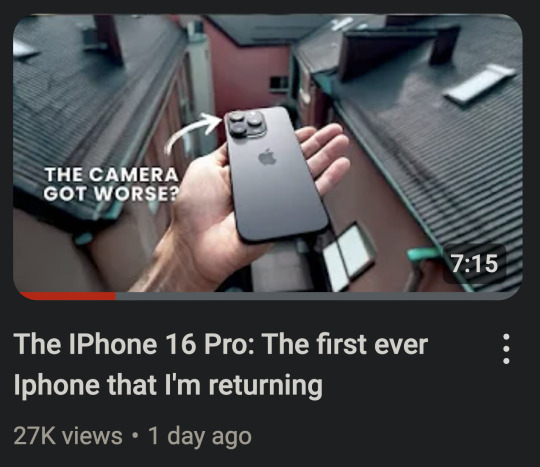

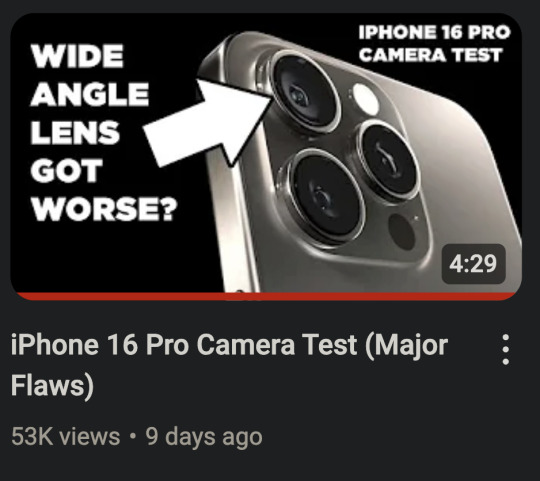
And I suppose this is partly Apple's fault. Their marketing and hype machine always goes overboard. But also, that's just how marketing works. Samsung has a "200 megapixel" sensor and Sony has a "Zeiss" lens. And I think it is unrealistic to expect smartphone companies to say "This product has entered the iterative phase and each new model will only be marginally improved over the last one."
Smartphones (from any brand) have become an appliance. You don't buy a new model of microwave every year. And you don't expect every new model of microwave to have new revolutionary technology. And that is pretty much the expectation you should have with most computer hardware from here on out.
And in some ways, that is a good thing. That means the design of the phone has pretty much been perfected and it will last you a long time if you take care of it. You will not be left behind and your phone will be able to handle any new software for most of its lifespan.
So, is Apple getting lazy or is there a reason their hardware is stagnating?
It seems that neither money nor marketing can change the laws of physics.
They cannot make transistors much smaller. Phones and computers are about as fast as current hardware designs can make them (unless there is a shocking scientific breakthrough). From here on out, heavy compute tasks that are beyond your phone or computer will be done in the cloud on giant computer clusters. Thankfully computers and phones seem to be plenty fast for the majority of tasks we ask of them.
I remember Katrina telling me her new computer didn't seem any faster. And I explained the computing tasks she does regularly were not really affected by the increased power and speed of her new computer. If something took 0.1 seconds before and now it takes 0.05 seconds, that is twice as fast. An increase in speed that looks fantastic in advertisements. But it is hard for our brains to perceive. She just didn't do anything on her computer that took it long enough for her to notice. But having a faster and more powerful computer/phone will increase its lifespan and resale value, so it is still prudent to get the best things you can afford at time of purchase.
And I'm afraid smartphone cameras are hitting their own hardware limitations. They can't make the sensors much larger to get better depth of field and low light performance. And cramming in more megapixels doesn't actually add much more detail, if any.
It's physics.
Again.
You cannot get any more performance out of a small plastic lens. Why do you think pro photographers haul around 10 pound lenses still?

There is a formula for detail that never seems to be explained in any camera marketing.
Here is the simplified version...
Detail = Sensor x Lens
Let's say 1 is perfection. You have a sensor that performs at 0.5 and a lens that performs at 0.2.
The total detail will be 0.1.
But in the new model you increase the performance of the sensor to 0.8. WOW! That's so close to 1!
The total detail will be... 0.16.
Now let's imagine we've discovered a magic, physics-defying tiny plastic lens that performs at 0.8 as well.
The total detail jumps to 0.64!
But we all get sucked into a wormhole because we violated the laws of the universe.
Even if you were to design a near perfect (perfect is impossible) sensor that scores 0.99.
Without that magic plastic lens... 0.198
This is why I put Samsung's "200 megapixel" sensors in quotes. Because when paired with the same tiny plastic lens, there isn't much improvement. And that's why a 12 megapixel DSLR from 10 years ago with a giant honking lens can still capture more detail.
Most of the quality from smartphone cameras comes from the computational software processing. Phones actually take many photos at once and combine them to get you a decent image.

While that is still improving a little bit each generation, those improvements are stagnating as well. Until image processing can do a better job of inventing more detail realistically, smartphones are going to have to obey the laws of physics.
So... why are photographers saying the iPhone cameras are worse?
First, the ultra wide angle lens looks softer in low light.
And if you zoom between 1x and 5x, the images look less detailed.
But neither of those things make the cameras *worse*. In fact, the cameras are better for the most part. It's just that Apple decided to compromise on one aspect to improve another. Probably due to market research telling them most people prioritize certain things over others when taking photos.
They increased the resolution of the ultra wide angle sensor to match the detail of the main sensor, but that seems to have lowered the low light performance of the ultra wide. So in good light, you will see an improvement in sharpness. But they could not increase the sensor size to compensate and smaller pixels can have trouble with dim conditions. They probably discovered that people mostly use that lens in good light and they would appreciate the bump in detail more.
But pro photographers often photograph in more challenging lighting conditions because you can capture a more artistic shot. I don't think I could have gotten this shot on a smartphone.
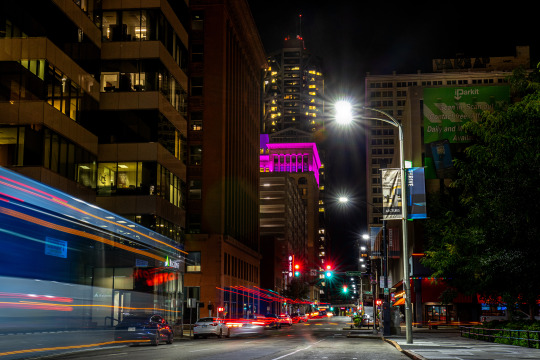
But photo normies are just taking pics of their kids doing weird kid shit.

They aren't really trying to push the limits of their ultra wide angle lenses.
And they increased the zoom of the telephoto lens to 5x from 3x because most people never used the 3x. So images at 5x look great now, but unfortunately if you use anything between 1x and 5x, your image will be *digitally* zoomed. Which is never as good as optical zoom. They basically crop the photo, zoom in, and add sharpening.
So they prioritized people having longer reach and more zoom at the expense of that middle zoom range. Every camera system makes tradeoffs and compromises.
And I hate that I always feel like I am defending Apple, because they do have misleading and dishonest marketing regarding a lot of aspects of their tech. But hating on Apple gets more clicks so content creators also make misleading and dishonest claims.
And so we are just surrounded in a circle of hyperbole from all sides.
Now, if you know these limitations, you can change your approach to photographing stuff to keep them from being an issue. You can reap the benefits without dealing with the new compromises.
Here are some tips to help owners of the new iPhone, but also everyone else too.
Smartphone Photography Tips
Whenever possible, try to use the main 1x camera at only 1x zoom. This has the largest sensor with the most detail and works best in the lowest light. Only use the ultra wide or telephoto if you cannot get the photo otherwise. If you aren't sure you have enough light for ultra wide, take the photo, and then as a safety, take two photos with the main camera side by side and stitch them later with a pano app.
"Zoom with your feet" and don't use "in-between" zooms. Let's say your lenses do 0.5x, 1x, and 5x zoom. Even though you have the option to use other zooms, like 2x or 3x, that is going to compromise your picture quality. It is essentially going to crop your photo and enlarge it, which causes a loss of detail. If fact, if you use 4.5x instead of 5x, your picture will probably look like trash. You are always going to get better results if you can move closer or step back so that you are using the native focal length of your chosen lens. For example, let's say you are taking a photo and you judge the best framing to be at 4x. But you still have 10 feet of space behind you. If you back up and then zoom in to 5x, the phone will switch to that lens and you will get a much clearer picture.
Rule of thumb...
1 to 3x... try to move closer.
4 to 5x... try to move back.
If you hit a wall and end up at 4.5x, you might see if you have a panorama mode and try that instead. Switch to your 5x and do the pano. Or you can take two photos and then stitch them together with software later on. (Stitching panos with an app later will give better quality than pano mode, especially in low light.)
Low light needs stability. Get some sort of stabilizing device for low light photos. Either a phone case that lets you stand up the phone on its own or a mini tripod.
This thing folds to the size of a credit card.
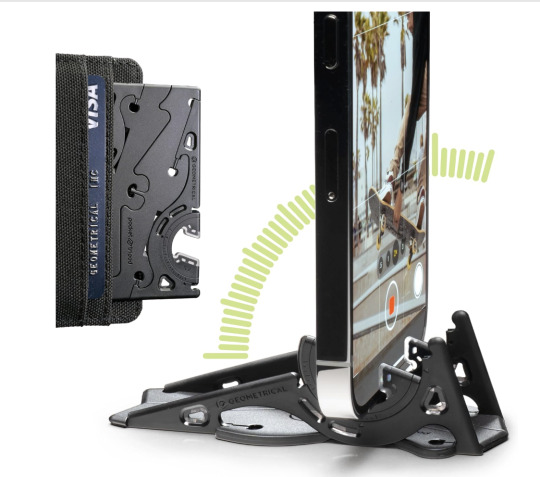
Your phone will detect when it is stable and not being handheld. It will then automatically extend its shutter speed allowing it to drink in more light and give you a better picture.
Tripods are photography magic and will improve your low light photos quite a bit. Motion blur of moving subjects can still be an issue, but photos of a cityscape or landscape will look great.
For selfies, shoot a little bit wide and then crop in. This goes a little contrary to my earlier advice saying cropping lowers detail, but this is specifically for shooting a face. The 0.5x and 1x lenses on smartphone cameras are fairly wide angle. This can cause unflattering proportions with human faces. Wide angle lenses exaggerate distance. Near things look very near and far things look very far. To a wide angle lens, the tip of your nose looks like it is super close but your ears seem like they are a mile away. And that's why you may look a bit "alien" in your selfies.
People's natural instinct is to "fill the frame" with a face. The outer edges of a wide angle lens are more distorted than the very center. So try to keep faces away from the edges of the frame.
And one other trick you can do for selfies and pictures of faces is step back a few feet. Sometimes this is hard, especially with selfies, as your arm is only so long... but if you can take your face photos from just a little bit farther back, you will almost entirely eliminate unflattering distortion. In some cases, just stretching out your arm as far as it will go is enough.
Then you just crop the image with the framing you originally wanted, and your facial proportions will look great.
An example...
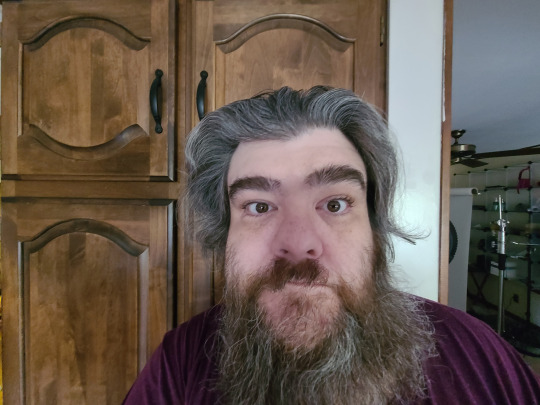
Here the distortion is bad because I am not in the center and the lens is too close to my face. The lens thinks my nose is really close and my ears are in Canada.

But when the lens is farther back the edge distortion is less prevalent and my nose and ears (relative to the lens) seem roughly the same distance away. So my proportions look great, but I don't quite have the framing I want.
But with a little cropping...
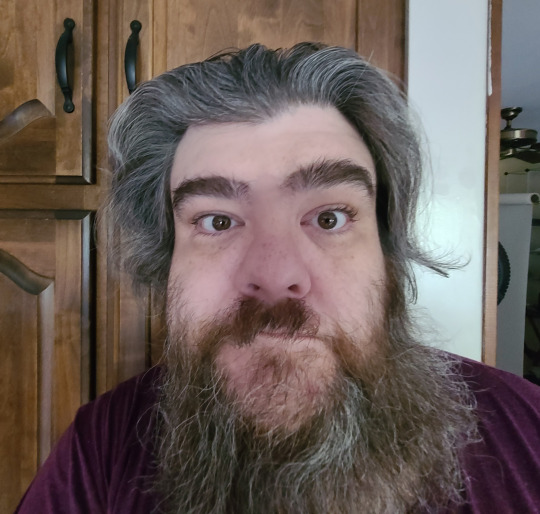
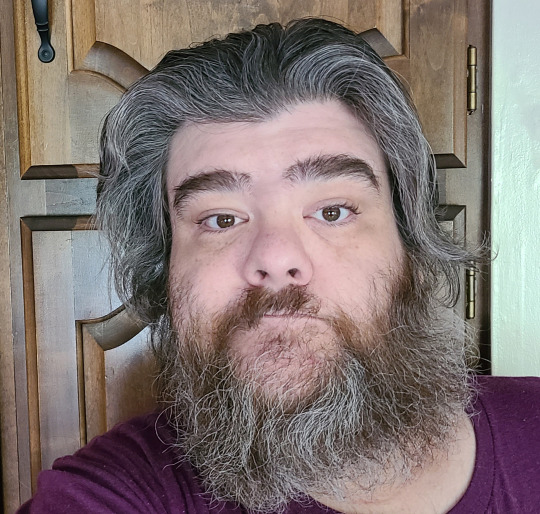
For social media there is still plenty of resolution to crop in. Cropping isn't bad, it's just always better to use it as a last resort or in a special circumstance like this. I get roughly the same framing as in my wide angle shot, but I don't look like I'm behind a door's peephole trying to sell you the Good News.
I wish they made a "mini" selfie stick that only extended a foot or so. With the main camera that is usually all people need to undo any wide angle issues. I have one of those mini tripods and that works well, but there is no activation button so I have to do a timer. Mirrors work great to help you get some selfie distance.
In any case, all cameras have limitations and compromises. Clickbait titles saying something is WORSE THAN THE OLD ONE are frustrating and wrong.
And people upgrading phones every year are silly. All current name brand smartphones have promised at least 5 years of software updates. I think Google and Samsung are offering 7 years on some models. And Apple has always just let you use your phone until it literally will not work with new software. Which has worked out to 8 years in some cases (with a battery swap).
Phones are now appliances. For now, hardware will improve 10 to 15% from generation to generation until physics breaks. So if you want a 50% improvement, wait 5 years and you'll think your new phone is awesome. If you upgrade every year, it is going to be difficult to see the change.
I hope to be starting a little course on smartphone photography in the near future. All modern phones are capable of taking amazing pictures. And as long as you understand their limitations you can mitigate or avoid them. And that is what I plan to teach.
#photography#bound by physics is right#lens size and sensor size are inherently tied to real life physics and there is a hard limit on how small you can make them#even if you continued to miniaturize everything else#your sensors and lenses are capped and cannot physically get smaller without sacrificing image quality#anyway part of the art is to pull things off even with substandard (phone) cameras#commentary#i wouldn't do an iphone tho lol. joke phone. 😂#more people need to understand zoom on phone cameras. if you're pinching in to 'zoom' you're probably failing#most of those are digital zooms which are the equivalent of cropping and enlarging the original image#it's a fake zoom and frankly they shouldn't exist#the only zoom you want is an optical zoom. it's not a zoom if it's not optical
701 notes
·
View notes
Text
I am this close to taping my phone to my eyeballs and using the camera zoom to see my glasses are NOT working and my SKULL IS MAD ABOUT IT
#rambles#I’m getting them replaced this summer but AUGH. LOW QUALITY EVERYTHING.#kid yall not I’m just using my phone camera to zoom in on like. Restaurant menus or signs n whatnot so I don’t die#I CAN see enough to read it but OW#There is a poor internet connection in my optic nerve
0 notes
Text



Elevate every shot with the Zeiss V4 4-16x50 Reticle 64 ZMOAI-T30 ASV Elevation
ring mounted rifle scope. Their compact design and perfect balance between a wide field of view and large magnification range is ideal for all types of hunting. Conquer accuracy with Zeiss and transform every shot into a success story..
#Zeiss Conquest V4#Rifle Scope#4-16x50#ASV Elevation Windage#Hunting Optics#Long-Range Shooting#Optics and Scopes#Precision Shooting#Tactical Optics#Hunting Gear#Reticle 64 ZMOAi-T30#Scope Mounting#Hunting Accessories#Shooting Equipment#Zeiss Optics#Hunting Essentials#Outdoor Gear#Optics Technology#Shooting Sports#Quality Optics
1 note
·
View note
Text
Optical Sorter for Food and Agriculture Market Set to Hit $3.9 Billion by 2035
The Optical Sorter for Food and Agriculture market, currently valued at $1.6 billion in 2024, is projected to grow to $3.9 billion by 2035, at a CAGR of 8.1%. The demand for optical sorting solutions in the food and agriculture sectors, particularly for grain sorting and fruit and vegetable sorting, is expected to surge during this period. Optical sorters play a crucial role in enhancing the efficiency, quality, and profitability of the sorting process, helping businesses meet food safety regulations and market quality standards.
Industry Leadership and Competitive Landscape
The Optical Sorter for Food and Agriculture market is characterized by fierce competition, with several major players such as Tomra Systems ASA, Bühler Group, Key Technology Inc., Satake Corporation, Cimbria, Sesotec GmbH, Raytec Vision SpA, GREEFA, Meyer Optoelectronic Technology Inc., Hefei Taihe Optoelectronic Technology Co. Ltd., Orange Sorting Machines India Pvt. Ltd., and TOMATO S.A. leading the charge in market innovation.
Detailed Analysis - https://datastringconsulting.com/industry-analysis/optical-sorter-for-food-and-agriculture-market-research-report
The growth of this market is fueled by advancements in technology, especially the integration of AI and machine learning, which enhance sorting capabilities. These technological innovations allow optical sorters to improve accuracy and speed, effectively identifying produce and grains that meet stringent quality standards. This helps reduce food waste and boosts profitability for agribusinesses.
Global and Regional Analysis
North America currently leads the market for optical sorters in the food and agriculture industry, driven by its extensive agro-based enterprises and food processing units. The rising need for efficient, cost-effective sorting mechanisms is pushing market growth in the region. The demand for AI-powered optical sorters is particularly strong in response to increasing labor costs and the growing need for precision and efficiency in the sorting process.
The market for optical sorters in emerging economies like India, Brazil, and Vietnam is expected to witness robust growth between 2025 and 2030, driven by the expansion of the agricultural sector and the increasing adoption of advanced sorting technologies.
Research ScopeSegmentSubsegmentTechnology TypeCamera-based Sorters, Laser-based Sorters, NIR Sorters, OthersProduct TypeBelt Sorter, Freefall Sorter, Channel Sorter, Automated Defect RemovalApplicationGrains & Seeds, Vegetables & Fruits, Coffee, Nuts & Dried Fruits, Pulses, OthersEnd-Use IndustryFood Processing Companies, Agribusiness Corporations, Equipment Rental & Leasing Companies, Others
Opportunities for Market Expansion
As the industry advances, key opportunities include:
The development and adoption of AI-powered optical sorters to reduce labor costs and enhance sorting precision.
Market expansion in emerging regions like India, Brazil, and Vietnam, where agricultural activities are growing rapidly.
Increased demand for optical sorters in the food processing and agribusiness sectors to comply with stringent food safety regulations.
About DataString Consulting
DataString Consulting offers a comprehensive range of market research and business intelligence solutions for both B2C and B2B markets. With over 30 years of experience in market and business research, DataString Consulting helps companies formulate effective strategies, assess opportunities, and make informed decisions. Our tailored solutions provide actionable insights that help clients gain a competitive edge and unlock new growth opportunities.
For more information, visit: DataString Consulting Optical Sorter Market Insights
#Optical Sorter#Food and Agriculture#Market Growth#Agricultural Technology#Food Processing#Grain Sorting#Fruit and Vegetable Sorting#Seed Cleaning#Market Trends#Technological Advancements#AI in Sorting#Food Safety#Agribusiness#Emerging Markets#TAM Expansion#Food Quality#B2B Market Research#Global Market Analysis#Strategic Partnerships#Market Forecast#Industry Insights#DataString Consulting
0 notes
Text
Chemical Oxygen Demand Sensor & Analyzer | Wizse Nsor Inc.
Wizse Nsor Inc. specializes in providing state-of-the-art Chemical Oxygen Demand (COD) sensors and analyzers that offer accurate, real-time monitoring for water quality management. Our COD sensors are designed to efficiently measure the amount of oxygen required to break down organic pollutants in water, making them ideal for wastewater treatment, environmental monitoring, and industrial applications.
Our COD analyzers use advanced optical and electrochemical technologies to deliver precise and reliable results, ensuring compliance with environmental standards and regulatory requirements. Whether you're in the field of water treatment, industrial processing, or environmental research, our COD sensor solutions are built to meet the rigorous demands of various applications.

The high sensitivity and durability of our COD sensors make them perfect for continuous monitoring in challenging environments. With easy integration, low maintenance, and real-time data collection, Wizse Nsor Inc. ensures that users receive consistent, accurate measurements for better decision-making.
Wizsensor Inc. is committed to innovation and customer satisfaction. We combine cutting-edge sensor technology with industry expertise to provide reliable and efficient COD monitoring solutions. Choose Wizse Nsor Inc. for the best in chemical oxygen demand sensor technology.
Water Conductivity Meter: Essential Guide by WizSensor
Water Conductivity Meter: Ultimate Guide
Ammonium Sensor & Ammonia Nitrogen Sensor Guide
Understanding Chemical Oxygen Demand (COD) Sensors
#Ammonium sensor#Ammonia nitrogen sensor#Water quality ammonium sensor#chemical oxygen demand sensor#chemical oxygen demand analyzer#cod sensor#dissolve oxygen sensor#dissolved oxygen probe#portable dissolved oxygen meter#optical dissolved oxygen sensor#do sensor
0 notes
Text
People seem to lack a sense of “obsolescence.” Something old might not automatically be garbage even if something new and better has come along. The older thing that is no longer in use might have been genuinely bad, but it’s very possible that it worked and maybe even worked quite well in its time—it may still work quite well now—but the new thing is still better or more effective. This is a question of societal and personal values and it has practical consequences.
I am trying to research vintage (and replica) rifle scopes right now, and it is extremely unhelpful to read people say that such and such thing is “garbage,” because I don’t know if that means garbage for its time, subjectively bad to the person speaking, or simply inferior to a modern high quality optic.
To give an analogous example, I have a pair of WWII binoculars. They’re clearly well-made, durable, good materials, and when you look through them, you can indeed see a thing that is far away as though it were closer. But my younger brother has a good pair of modern binoculars and when you look through them not only is the image better resolution than real life, it is brighter and I’m pretty sure you see colors invisible to the naked eye. It’s insane how good they are.
The old binoculars are still perfectly functional. The new ones just do the same thing much better.
#for years my only experience with optics was like#antiques or very low quality chinese nonsense#then one day I looked through an ACOG#astonishing#is this boomerposting?#the new binoculars are clearly better#as is the new good quality scope
19 notes
·
View notes
Text
Information
The KODAK PIXPRO FZ55-BK is a compact yet powerful point-and-shoot digital camera designed for everyday photography and vlogging. With a 16-megapixel CMOS sensor, 5X optical zoom, and 28mm wide-angle lens, this camera delivers sharp and detailed images with ease. It also records 1080P Full HD videos, making it ideal for capturing precious moments on the go. Its lightweight design and intuitive controls make it perfect for beginners, travelers, and vloggers alike.
>>>>---- Click To Know More About That Product -----<<<<<
Blue Color Camera >>>>----- https://amzn.to/4jNMgFG -----<<<<<
Red Color Camera >>>>----- https://amzn.to/4hm6jcG -----<<<<<
Key Features
📸 High-Quality Images with 16MP CMOS Sensor
The 16-megapixel BSI (Back-Side Illuminated) CMOS sensor ensures crisp, clear, and vibrant images, even in low-light conditions.
Supports various scene modes for optimized photography, including portrait, landscape, night, and more.
🔍 5X Optical Zoom with 28mm Wide-Angle Lens
Get closer to the action with 5X optical zoom, allowing you to capture distant subjects without losing image quality.
The 28mm wide-angle lens is perfect for landscape shots, group photos, and vlogging.
🎥 Full HD 1080P Video Recording
Capture high-definition videos at 1080P resolution for smooth and detailed footage.
Perfect for vlogging, video journaling, and casual filmmaking.
🎞 Digital Image Stabilization
Reduces blur and shaky footage, ensuring stable photos and videos, even when shooting handheld.
📱 2.7" LCD Display
The bright 2.7-inch LCD screen provides a clear view for framing shots and reviewing images.
🔋 Rechargeable Lithium-Ion Battery
Includes a rechargeable Li-ion battery for extended shooting sessions without the need for disposable batteries.
🎭 Face Detection & Beauty Mode
Face detection helps focus on faces automatically for sharp portraits.
Beauty mode enhances skin tones and smoothens features for flattering selfies.
🌙 Low-Light & Night Mode
Capture bright and clear images even in dim lighting conditions with specialized low-light settings.
🏞 Multiple Scene Modes
Various preset scene modes optimize settings for different shooting environments, including portrait, landscape, night, sports, beach, and more.
📂 Expandable Storage
Supports microSD/micro SDHC cards (up to 32GB) for storing thousands of photos and videos.
Specifications
FeatureDetailsSensor16MP CMOS SensorZoom5X Optical ZoomLens28mm Wide-AngleDisplay2.7-inch LCDVideo Resolution1080P Full HDStabilizationDigital Image StabilizationBatteryRechargeable Li-ion BatteryStoragemicroSD/micro SDHC (up to 32GB)ConnectivityUSBWeightLightweight & Portable
Who Is It For?
✅ Beginners – Simple point-and-shoot functionality makes it easy to use. ✅ Vloggers – Full HD video recording and a compact design make it great for on-the-go content creation. ✅ Travelers – Lightweight and portable for easy carrying. ✅ Families & Casual Users – Ideal for capturing everyday moments and special occasions.
What’s in the Box?
✔ KODAK PIXPRO FZ55-BK Digital Camera (Black) ✔ Rechargeable Li-ion Battery ✔ USB Charging Cable ✔ Wrist Strap ✔ Quick Start Guide
#Information#The KODAK PIXPRO FZ55-BK is a compact yet powerful point-and-shoot digital camera designed for everyday photography and vlogging. With a 16#5X optical zoom#and 28mm wide-angle lens#this camera delivers sharp and detailed images with ease. It also records 1080P Full HD videos#making it ideal for capturing precious moments on the go. Its lightweight design and intuitive controls make it perfect for beginners#travelers#and vloggers alike.#>>>>---- Click To Know More About That Product -----<<<<<#Blue Color Camera >>>>----- https://amzn.to/4jNMgFG -----<<<<<#Red Color Camera >>>>----- https://amzn.to/4hm6jcG -----<<<<<#Key Features#📸 High-Quality Images with 16MP CMOS Sensor#The 16-megapixel BSI (Back-Side Illuminated) CMOS sensor ensures crisp#clear#and vibrant images#even in low-light conditions.#Supports various scene modes for optimized photography#including portrait#landscape#night#and more.#🔍 5X Optical Zoom with 28mm Wide-Angle Lens#Get closer to the action with 5X optical zoom#allowing you to capture distant subjects without losing image quality.#The 28mm wide-angle lens is perfect for landscape shots#group photos#and vlogging.#🎥 Full HD 1080P Video Recording#Capture high-definition videos at 1080P resolution for smooth and detailed footage.
0 notes
Text
The Future of Precision: Why Optic Chart is Revolutionizing Optical Solutions
“Clarity is the new currency in the optical world.”
In an era where precision and accuracy define the quality of optical solutions, Optic Chart stands out as a beacon of innovation and reliability. Whether you're an optical professional, a medical practitioner, or someone seeking premium optical tools, Optic Chart is here to redefine your expectations.
What Makes Optic Chart Unique?
Optic Chart isn't just another provider of optical solutions—it’s a one-stop platform designed to cater to diverse optical needs. From advanced visual acuity testing charts to state-of-the-art tools for optical diagnostics, our offerings are built to ensure accuracy, reliability, and ease of use.
But what truly sets us apart is our commitment to:
Cutting-edge technology: Offering high-quality optical tools tailored for modern practices.
User-friendly designs: Simplifying the process for professionals and patients alike.
Sustainability: Incorporating eco-friendly solutions for a greener future.
Why Accurate Optical Tools Matter
Whether it's diagnosing vision issues or conducting routine eye exams, optical tools form the backbone of modern eye care. Poorly calibrated or outdated tools can lead to misdiagnosis, patient dissatisfaction, and even long-term damage to eye health.
Optic Chart ensures that such risks are minimized. Our products, including digital eye charts, refractive index tools, and lens quality testers, are crafted with precision to support flawless diagnoses and superior care.
Benefits of Choosing Optic Chart
Enhanced Patient Care: Our tools allow professionals to provide accurate and timely diagnoses.
Cost-Effective Solutions: Affordable pricing without compromising on quality.
Global Recognition: Trusted by thousands of optical professionals worldwide.
Comprehensive Product Range: From basic charts to advanced diagnostic kits, we cover it all.
Trending Optical Technologies of 2025
Stay ahead in the optical industry by embracing these upcoming trends:
AI-Powered Diagnostic Tools: Revolutionizing eye exams with predictive analytics.
Virtual Reality (VR) in Optometry: Enhancing visual therapy techniques.
Smart Lenses: The future of wearable optical tech.
Optic Chart remains at the forefront of these innovations, continuously upgrading its portfolio to deliver top-tier solutions.
Why SEO-Optimized Content Is Key for Optical Professionals
If you’re an optical business, don’t just focus on traditional tools—invest in your online presence. By leveraging SEO strategies and targeting high-performing keywords like:
“Buy optical diagnostic tools online”
“Best eye charts for clinics”
“Advanced optical solutions provider,” you can drive more traffic, boost engagement, and grow your business effectively.
Conclusion
Optic Chart is not just a brand—it’s a promise of excellence. With our cutting-edge products and industry expertise, we aim to empower optical professionals and redefine the way eye care is delivered.
Join the revolution today! Visit Optic Chart to explore our range of products and take the first step toward precision-driven eye care.
Meta Description
"Discover how Optic Chart is revolutionizing optical solutions with innovative tools and technologies. Explore the best optical diagnostic tools and elevate your practice today!"
This article highlights your brand's key strengths while incorporating SEO-friendly keywords. Let me know if you'd like any edits or additional sections!
#artificial intelligence#branding#ecommerce#eye care#optic chart#optic nerve#eye lense#eye. test#eye tester#lense quality
1 note
·
View note
Text
Orange Slim Phone Cases

These Slim Phone Cases in vibrant ORANGE offer a sleek and stylish way to protect your phone. The glossy finish and slim design provide a subtle touch of personality to your device. Perfect for those who want a durable yet lightweight phone case that stands out. Ideal for tech-savvy individuals who appreciate quality and style. Great for gifting on birthdays, holidays, or special occasions.
Buy it now from
#- Lay-flat bezel protects screen from scratches#- UV protected for longterm optical quality#- Slim form with smooth edges for subtle protection#- Durable Lexan polycarbonate plastic material#- Glossy surface for high image quality
0 notes